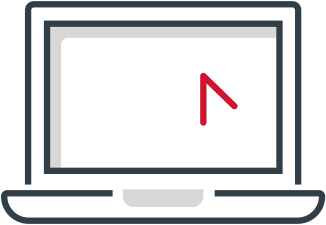Auto logout in seconds.
Continue Logout"Whether dealing with employees who are working in the office, remotely, or on a hybrid schedule," managers should avoid making these five key mistakes as offices begin to reopen, Tsedal Neeley writes for the Wall Street Journal.
Tips to make telework work for your team
1. Micromanaging your employees
While many bosses were initially worried that remote work would reduce productivity, Neeley notes that it actually made many employees more productive. Citing research showing that people thrive when they have autonomy over their work and schedules, Neeley argues that "treating workers like children" stifles their potential.
Even so, Neeley acknowledges that a "certain level of structure and consistency is still crucial, especially as we adapt to a new normal." Accordingly, she recommends that managers—rather than reinstating "the control practices that were standard for so long"—create centralized and equitable guidelines to be interpreted collectively with teams.
For example, if a company feels it's important to have some team members in the office at the same time to collaborate, she writes, leaders should leave it to individual teams to establish specific schedules. That way, each team can determine what parts of their work are best done in-person or remotely.
2. Overusing technology
Scheduling last-minute or back-to-back video meetings may have been manageable when everyone was stuck at home, Neeley writes, but the "resulting tech exhaustion won't be tolerable as things return to normal."
According to Neeley, employees need time to decompress between meetings, and bosses shouldn't expect remote workers to be available at any time of the day or week. Neeley recommends managers learn how to balance using digital tools, such as videoconferencing and email, and in-person interactions to foster a "healthier and more productive team."
3. Reverting back to distant professionalism
This past year and a half forced workers to reconsider the boundaries between professional and personal. Employees often discussed fears and struggles during such unprecedented times—and the resulting "vulnerability was the key to our strength and solidarity in a time of unprecedented challenges."
As some employees return to the office, Neeley warns against "rebuilding the work-life wall." Not only do many employees like the new openness, but research demonstrates that this "self-disclosure" among co-workers leads to increased trust and empathy.
Neeley says managers should devote time to continue to foster these close bonds among team members, even if just via a simple coffee break, while maintaining appropriate boundaries.
4. Relying on in-office presence as a metric for performance evaluations
Before the pandemic, companies had unofficial practices of considering "butts in seats" metrics for performance evaluations—"[b]ut as it turns out, getting in early and staying late isn't necessarily related to performance," Neeley writes.
Managers should remember that lesson and avoid judging employees solely by their presence as they return to the office. Ultimately, she writes, this means managers have to "equip people with the skills, tools, and resources, and get out of the way."
5. Refusing to experiment
Neeley warns managers not to return to the office overconfidently, thinking they already know how the "new normal" will play out. She recommends managers embrace a flexible mindset to acknowledge that it will take time—and a lot of trial and error—to navigate the best way to manage returning employees. (Neeley, Wall Street Journal, 8/14)

Covid-19 has introduced unprecedented challenges for managers who may now be managing a remote team or a team adapting to ever-changing circumstances amidst the pandemic. This toolkit is for leaders who need new tools to keep their team productive, engaged, and aligned.
Don't miss out on the latest Advisory Board insights
Create your free account to access 1 resource, including the latest research and webinars.
Want access without creating an account?
You have 1 free members-only resource remaining this month.
1 free members-only resources remaining
1 free members-only resources remaining
You've reached your limit of free insights
Become a member to access all of Advisory Board's resources, events, and experts
Never miss out on the latest innovative health care content tailored to you.
Benefits include:
You've reached your limit of free insights
Become a member to access all of Advisory Board's resources, events, and experts
Never miss out on the latest innovative health care content tailored to you.
Benefits include:
This content is available through your Curated Research partnership with Advisory Board. Click on ‘view this resource’ to read the full piece
Email ask@advisory.com to learn more
Click on ‘Become a Member’ to learn about the benefits of a Full-Access partnership with Advisory Board
Never miss out on the latest innovative health care content tailored to you.
Benefits Include:
This is for members only. Learn more.
Click on ‘Become a Member’ to learn about the benefits of a Full-Access partnership with Advisory Board
Never miss out on the latest innovative health care content tailored to you.
